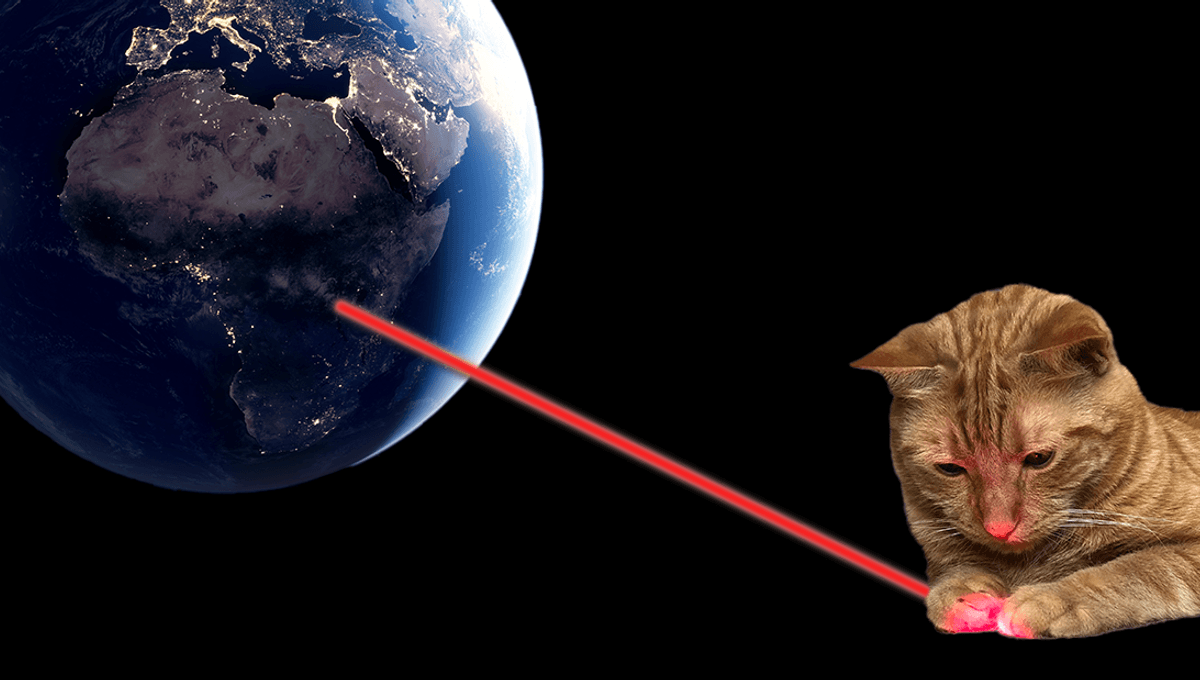
The first streaming video carried by laser beam from beyond the Moon has been received from 31 million kilometers (19 million miles) away. For extra points, it’s ultra-high definition (and very cute).
Among the technical challenges required for human colonization of the Solar System, improved communication systems may not be top of mind. However, when you consider how painfully long it took New Horizons to send back its images from its brief flyby of Pluto, it’s clear we need to pick up the pace.
Last month, NASA conducted a demonstration of the practicality of using near-infrared laser beams to transmit data from the Psyche mission, then at a distance of 16 million kilometers (10 million miles) from Earth.
At the time, NASA HQ’s Trudy Kortes described that achievement in a statement as “One of many critical […] milestones in the coming months, paving the way toward higher-data-rate communications capable of sending scientific information, high-definition imagery and streaming video in support of humanity’s next giant leap: sending humans to Mars.”
The scientific information may have to wait until spacecraft Psyche reaches its destination, the metal-rich asteroid of the same name, but the streaming videos are here right on time. The technical challenges of sending something like this are immense, and get larger the longer the video, so NASA wanted to keep it short. In that context, what could be a more appropriate introduction than 15 seconds of a cat chasing a laser dot?
For the record, the interplanetary feline star is named Taters, who I think we can all agree is fully deserving of Internet stardom, including restoring the battered reputation of orange cats.
In case anyone is worried, no we have not returned to the bad old days when the Soviet Space Program sent dogs into space to die. Taters is not on board the Psyche mission. Instead, the video was filmed on Earth and uploaded to the spacecraft before it launched.
“This accomplishment underscores our commitment to advancing optical communications as a key element to meeting our future data transmission needs,” said NASA Deputy Administrator Pam Melroy in a new statement. “Increasing our bandwidth is essential to achieving our future exploration and science goals, and we look forward to the continued advancement of this technology and the transformation of how we communicate during future interplanetary missions.”
Even with the peak of NASA’s technology, transmitting from 63 light seconds away requires some delays. It took 101 seconds for the 15-second cat-laser dance to reach Earth at a rate of 267 megabits per second.
The video was encoded into near-infrared laser signals and sent by a flight laser transceiver carried aboard Psyche to the Hale Telescope at Mount Palomar – for decades the largest optical telescope in the world. The transmission was downloaded and forwarded on to the Jet Propulsion Laboratory (JPL), where it was played to cat lovers and communications enthusiasts alike.
“Despite transmitting from millions of miles away, it was able to send the video faster than most broadband internet connections,” said JPL’s Ryan Rogalin. “In fact, after receiving the video at Palomar, it was sent to JPL over the internet, and that connection was slower than the signal coming from deep space.”
The demonstration is an important step, but it doesn’t mean NASA’s communication problems are solved. The further the spacecraft gets from Earth – and it’s less than one-twelfth of the way to the nearest part of its target’s orbit – the harder it will be to point the laser so accurately the message will be readable by a suitably large telescope. Moreover, as distance increases, even with messages traveling at the speed of light, both the sending spacecraft and the Earth will move enough in the course of time the laser will take to travel between to require readjustments.
To give some sense of the scale of the advance, NASA notes that the Magellan voyage to Venus downloaded a total of 1.2 terabits during its four-year mission. On December 4, in preparation for Taters’ debut, Psyche downloaded 1.3 terabits in some test runs at progressively increasing speeds.
Taters owns a JPL employee (only fools think it’s the other way around), and will presumably need to wear sunglasses from now on to avoid being recognized. The overlayed graphics include Psyche’s orbital path, Tater’s heart rate and breed, and technical information about the laser and transmission rate.
The choice of video pays tribute to the use of Felix the cat in early television test broadcasts and to the fact the Internet is made out of cats.
Source Link: Earth Just Received Laser-Beamed Cat Video From 19 Million Miles Away